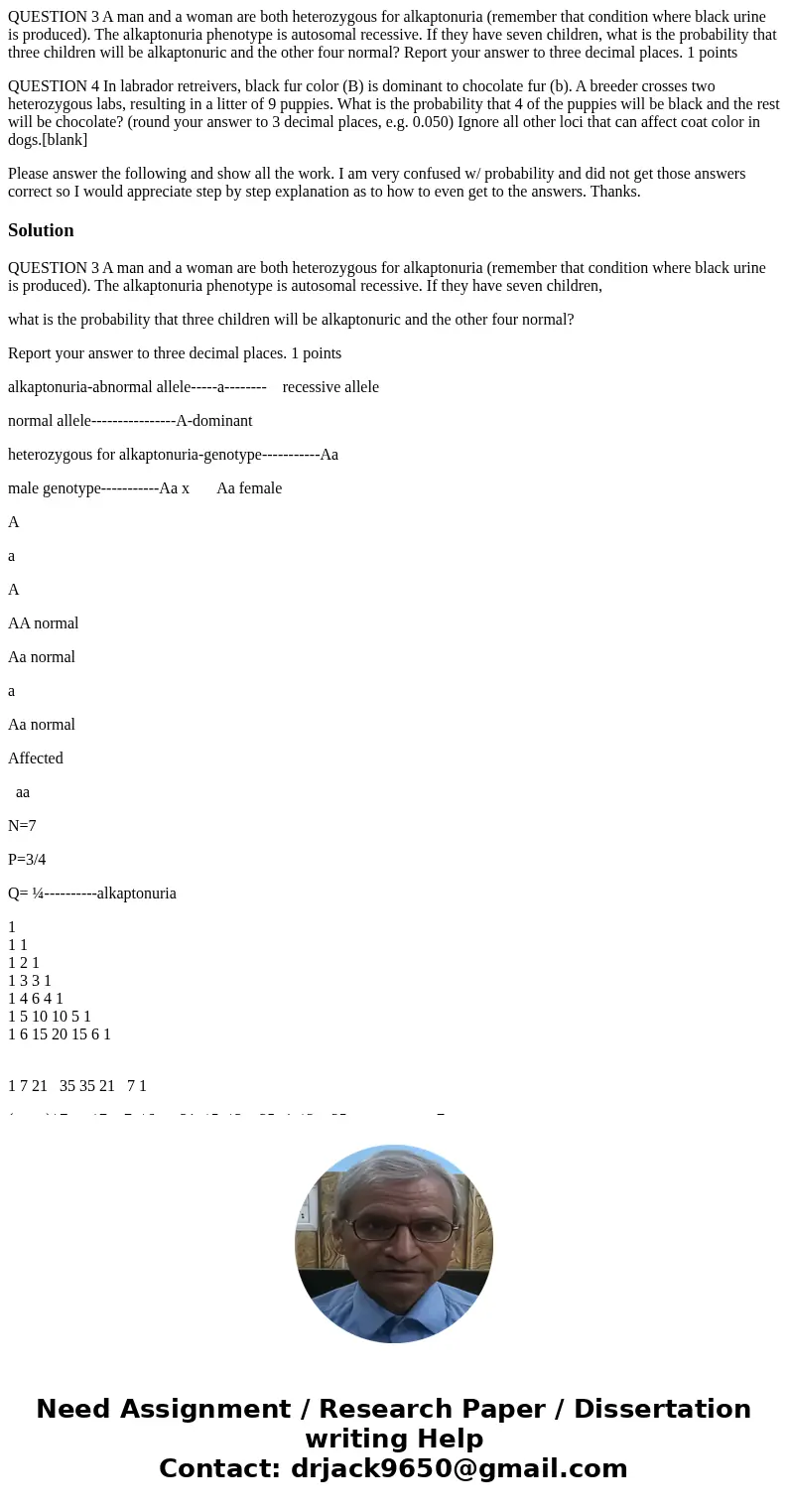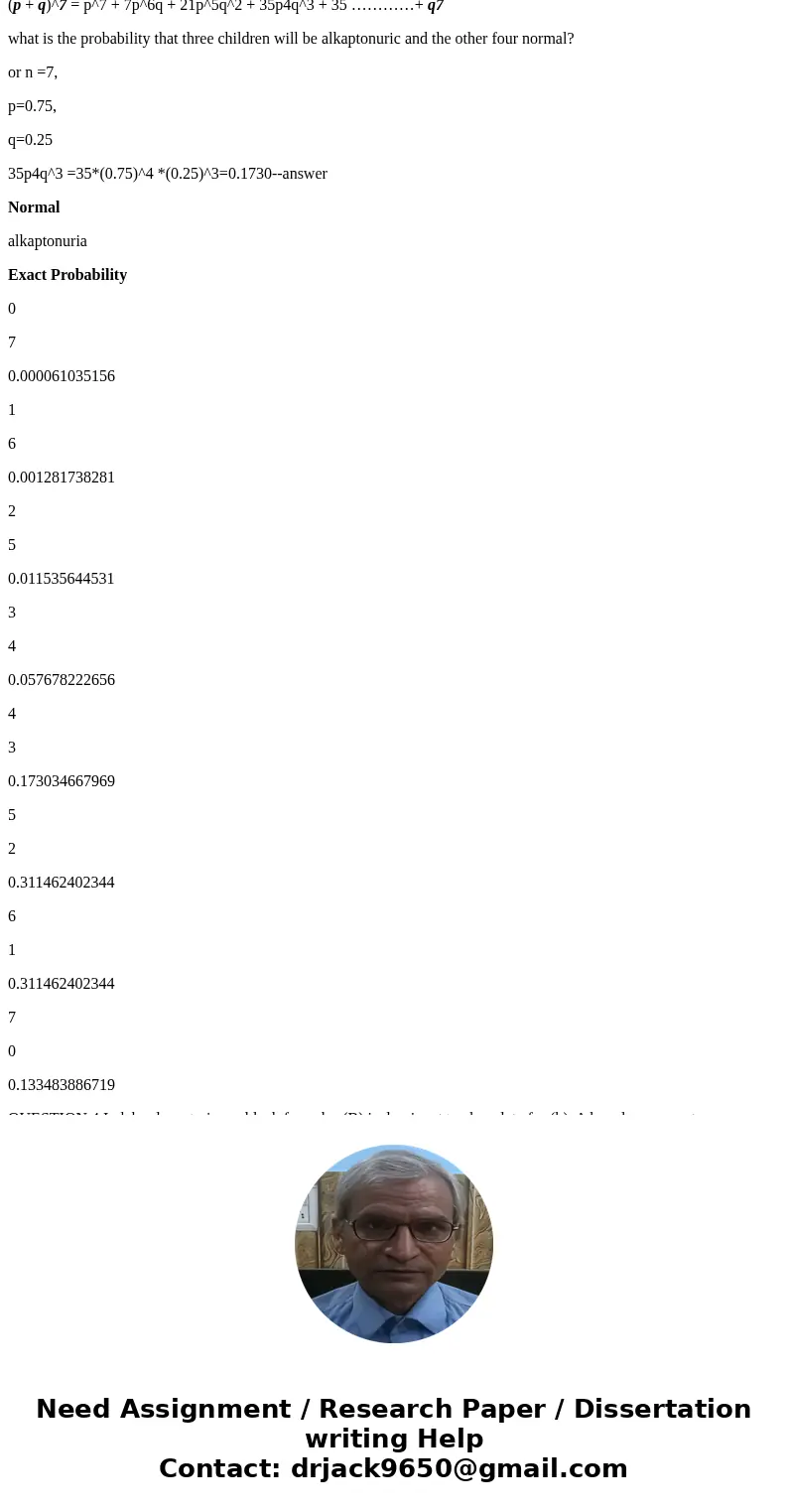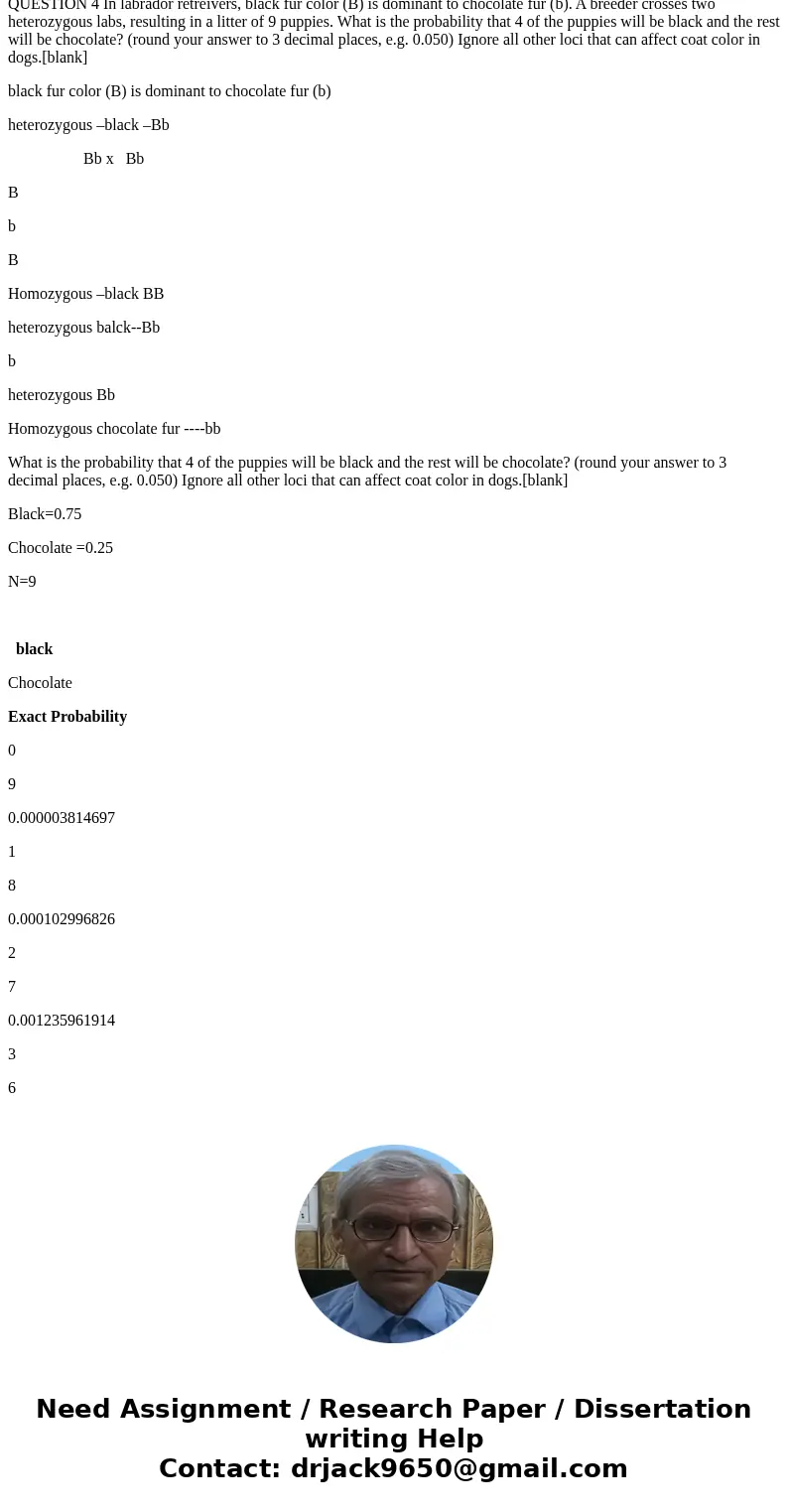QUESTION 3 A man and a woman are both heterozygous for alkap
QUESTION 3 A man and a woman are both heterozygous for alkaptonuria (remember that condition where black urine is produced). The alkaptonuria phenotype is autosomal recessive. If they have seven children, what is the probability that three children will be alkaptonuric and the other four normal? Report your answer to three decimal places. 1 points
QUESTION 4 In labrador retreivers, black fur color (B) is dominant to chocolate fur (b). A breeder crosses two heterozygous labs, resulting in a litter of 9 puppies. What is the probability that 4 of the puppies will be black and the rest will be chocolate? (round your answer to 3 decimal places, e.g. 0.050) Ignore all other loci that can affect coat color in dogs.[blank]
Please answer the following and show all the work. I am very confused w/ probability and did not get those answers correct so I would appreciate step by step explanation as to how to even get to the answers. Thanks.
Solution
QUESTION 3 A man and a woman are both heterozygous for alkaptonuria (remember that condition where black urine is produced). The alkaptonuria phenotype is autosomal recessive. If they have seven children,
what is the probability that three children will be alkaptonuric and the other four normal?
Report your answer to three decimal places. 1 points
alkaptonuria-abnormal allele-----a-------- recessive allele
normal allele----------------A-dominant
heterozygous for alkaptonuria-genotype-----------Aa
male genotype-----------Aa x Aa female
A
a
A
AA normal
Aa normal
a
Aa normal
Affected
aa
N=7
P=3/4
Q= ¼----------alkaptonuria
1
1 1
1 2 1
1 3 3 1
1 4 6 4 1
1 5 10 10 5 1
1 6 15 20 15 6 1
1 7 21 35 35 21 7 1
(p + q)^7 = p^7 + 7p^6q + 21p^5q^2 + 35p4q^3 + 35 …………+ q7
what is the probability that three children will be alkaptonuric and the other four normal?
or n =7,
p=0.75,
q=0.25
35p4q^3 =35*(0.75)^4 *(0.25)^3=0.1730--answer
Normal
alkaptonuria
Exact Probability
0
7
0.000061035156
1
6
0.001281738281
2
5
0.011535644531
3
4
0.057678222656
4
3
0.173034667969
5
2
0.311462402344
6
1
0.311462402344
7
0
0.133483886719
QUESTION 4 In labrador retreivers, black fur color (B) is dominant to chocolate fur (b). A breeder crosses two heterozygous labs, resulting in a litter of 9 puppies. What is the probability that 4 of the puppies will be black and the rest will be chocolate? (round your answer to 3 decimal places, e.g. 0.050) Ignore all other loci that can affect coat color in dogs.[blank]
black fur color (B) is dominant to chocolate fur (b)
heterozygous –black –Bb
Bb x Bb
B
b
B
Homozygous –black BB
heterozygous balck--Bb
b
heterozygous Bb
Homozygous chocolate fur ----bb
What is the probability that 4 of the puppies will be black and the rest will be chocolate? (round your answer to 3 decimal places, e.g. 0.050) Ignore all other loci that can affect coat color in dogs.[blank]
Black=0.75
Chocolate =0.25
N=9
black
Chocolate
Exact Probability
0
9
0.000003814697
1
8
0.000102996826
2
7
0.001235961914
3
6
0.008651733398
4
5
0.038932800293
Answer
5
4
0.116798400879
6
3
0.233596801758
7
2
0.300338745117
8
1
0.225254058838
9
0
0.07508468627
| A | a | |
| A | AA normal | Aa normal |
| a | Aa normal | Affected aa |




 Homework Sourse
Homework Sourse